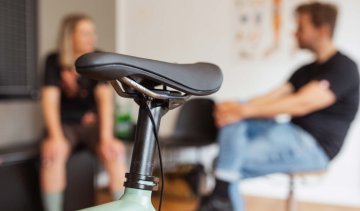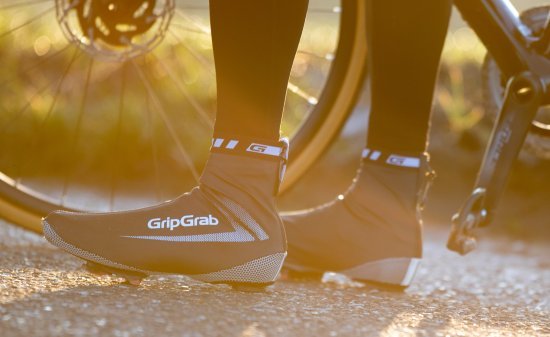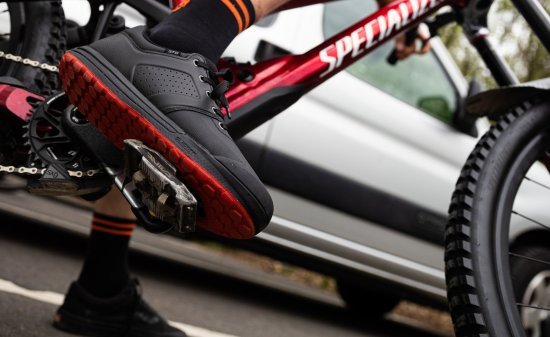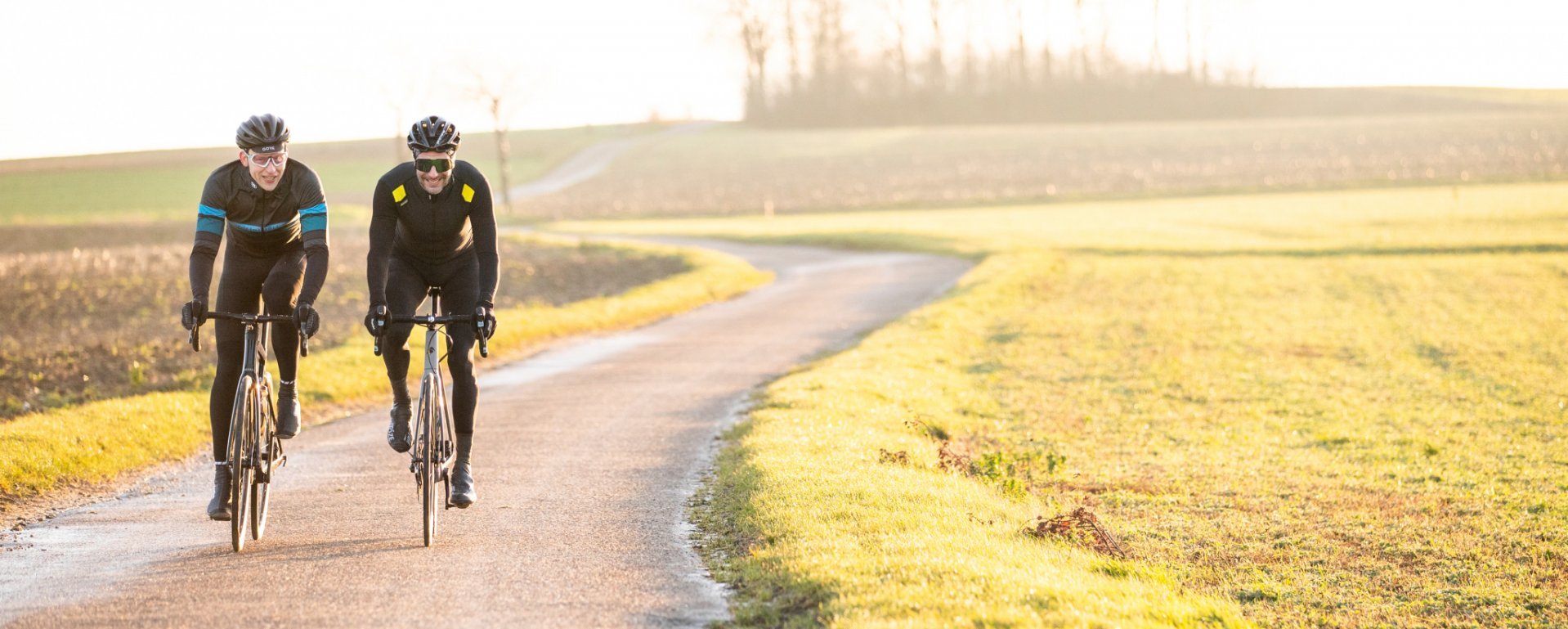
Product test: Thermoformable bike saddles from ...
A bike saddle that adapts to your anatomy? We have tested the thermoformable saddles from REFORM for you, which promise exactly that.
SPD? ATAC? SPD-SL? Kéo? There are many clipless pedal systems for MTB and road bikes, but they are not all compatible. An overview of all systems.
With clipless pedals, you literally enter into a firm bond with your bike. By placing the foot in the right place and applying slight pressure forwards and downwards, the cleat on your shoe engages noticeably and audibly with the pedal. Every time you clip in, your feet connected to the pedal in the precise position that you chose when you installed the cleats. The firm connection brings advantages in the form of a rounder stroke and better power transfer. Clipless pedals are especially helpful in sprinting. You can ride lightly over bumpy passages, or ride further without being jolted by the pedal. To clip out, you simply turn your foot outwards and dismount. With clipless pedals, however, there are many different systems that are not compatible with each other, and that differ significantly in detail. We’ll help explain the most important clipless systems that you should know about.
There are two approaches to the clip mechanism, which differ on a fundamental level: on road bikes, power transfer takes the highest priority, which is why cleats with a large contact surface to the pedal are used and the connection is rather firm. Pedals for mountain bikes, on the other hand, come with much smaller cleats that allow for more freedom of movement (AKA float) and are less annoying when walking. In contrast to pure road bike pedals, they are much more universal and also suitable for touring or gravel bikes. How well power transfers via the small cleats depends strongly on the stiffness of your shoes. To that end, cross-country or marathon shoes are correspondingly stiff.
To be able to ride clipless pedals, you need special shoes to which the counterparts to the pedals – namely, the cleats – can be firmly screwed. There are different sole standards that are not compatible with each other, and it is crucial that your shoes fit your pedals. Most road bike shoes have three threads in the sole. Smaller cleats on mountain bike shoes are usually installed with two bolts each. Clipless shoes for urban use and touring also usually rely on two-bolt soles.
Clipless pedals come in many forms. With the exception of Wahoo-Speedplay, road bike pedals tend to be larger and only have a clip mechanism on one side, as this needs a lot of space for the generous contact surface. The underside is usually aerodynamically optimised and provides ground clearance in curves. Double-sided pedals are widely used on mountain bikes. The advantage with this is that you don’t have to search for the right side to clip in. Manufacturer crankbrothers has a special design that offers the possibility to clip in from four different sides.
Probably the most widely-used pedal system for mountain bikes is Shimano Pedaling Dynamics – known to most as SPD. A mechanism of metal clips and springs on the pedal works with two-bolt steel cleats. You select the position of your foot on the pedal by moving the cleat on the shoe. Once clipped in, you can turn your foot a few degrees before you clip out. The release hardness is adjustable on Shimano and many other comparable systems. Some manufacturers offer pedals whose mechanism and cleats are very similar to those of Shimano and are partially compatible. For the best functionality, however, you should use cleats made by the pedals’ manufacturer. Our product descriptions provide further information on the compatibility of various systems.
Multi-Release Cleats from Shimano are a special case. They allow you to clip out not only by twisting your foot, but also by tilting it outwards. Most SPD pedals let you clip in from two sides, but single-sided and combination pedals are also available.
The brand crankbrothers offers yet another type of pedal construction. The minimalist Eggbeater pedals in particular are quite popular in cross country and gravel biking. The lightweight and minimalist design allows you to clip in on four sides thanks to its symmetrical shape, and has excellent self-cleaning properties. Even crankbrothers pedals with a cage make it very easy to clip in, as the clip mechanism rotates freely in the cage. Clipping in and out feels particularly smooth thanks to the springy brackets and brass cleats. crankbrothers offers two-bolt cleats in four different versions with 0° or 6° range of motion. If you turn your foot beyond these parameters, tension builds up until you clip out at a release angle of 10° to 20° (depending on your cleat and installation).
With the ATAC series, Time also relies on pedals with two-bolt brass cleats that clip between metal brackets. In use since the nineties, the system has been considered functional, durable and less susceptible to accruing dirt. Within the margin in which your clipped-in foot is allowed to turn a few degrees, tension builds up between the stirrups until you clip out. You can select the release angle for classic ATAC cleats between 13° and 17° by swapping the left and right cleat. The Easy Cleats offer you a beginner-friendly release angle of 10°. The cleats cannot be moved sideways when mounted on the shoe, as is the usual case with other systems. Instead, depending on the shoe, your foot can slide up to one centimetre sideways in the mechanism and automatically find the best position. ATAC stands for Auto Tension Adjustment Concept – a reference to the fact that, thanks to the continuous tension, there is no release hardness which needs to be adjusted. Time ATAC pedals are designed symmetrically, allowing you to clip in on two sides; a combination pedal and versions with a cage and pins are also available.
The clip mechanism from the brand HT consists of a fixed clamp at the back and a tensioned metal bracket at the front. The system for two-bolt shoes looks a bit like a mixture of SPD and ATAC pedals, and works in effect like that. You can adjust your foot’s float by changing out the cleats. The release angle is 13°, and the release hardness is adjustable. HT’s pedals are also symmetrical in their construction, also allowing you to clip in from two sides.
The system from Magped is a special mixture of clipless and platform pedals. It does not require a mechanism or a fixed attachment. Instead, you mount a steel cleat on the shoe (two-bolt sole), which holds onto the pedal via a neodymium magnet. Each pedal has a magnet on both sides with either up to 15 or up to 20 kilograms of traction, which facilitates a round pedal stroke. To release yourself from the pedal with less force, just put your foot down to the side. For more grip, the pedal cage is equipped with screw-in pins, similar to what you find on flat pedals.
The Union from English manufacturer Hope is a pedal system that offers a particularly high degree of freedom in terms of adjustment options. At first glance, the mechanism resembles Shimano's SPD system, but both the front and rear metal clamps are movable on the Hope system. There are two different versions of the stainless steel cleats, which differ in release angle and freedom of movement (4/12 degrees or 5/13 degrees). You can move the cleats in all directions when installing them on shoes and also turn them slightly to adjust them to the position of your foot. In addition to the freedom of movement when turning the feet, Hope Union pedals offer two millimetres of clearance to move the foot sideways. The cleat height can be adjusted with the aid of shims, which ensures that the shoe sole sits optimally on the pedals with a cage around the clip-in mechanism. This is a big advantage, especially for models with pins. A template helps you to easily deternube which and how many shims you should use. The spring preload and thus the resistance when clipping out is adjustable.
The road pedal system from Shimano bears the name SPD-SL. In this case, SL stands for super light. The single-sided connection with adjustable release hardness, together with large plastic cleats for three-bolt soles, ensures consistent power transfer. Shimano offers you the choice between three different cleats with different degrees of float: 0°, 2° or 6° degree float.
Look is known for having introduced the clipless pedal to the market in 1984, creating the standard for many of today’s road bike pedals. The current system bears the name Kéo and works similarly to SPD-SL, but these systems are not compatible. Look Kéo also offers reliability and excellent power transfer thanks to a large contact surface in the single-sided mechanism. With standard models, you can adjust the release hardness using a hex tool. Kéo Blade models use a carbon leaf spring, making them even lighter and more aerodynamic. To adjust the release hardness, you have to change out the leaf springs, but you can find information on this in the product description supplied with the pedals. Despite different spring mechanisms, both normal Kéo pedals and Kéo Blade pedals work with the same Kéo cleats for three-bolt soles. You can choose between 0°, 4.5° and 9° float. However, pay attention with older Look pedals: The Delta System cleats are not compatible with Look Kéo.
Pedals from Wahoo-Speedplay turn the tables and relocate the actual clip mechanism to the shoe. This affords the advantage of an extremely small and light pedal body that you can clip in on from two sides. The system also offers you the most options in terms of settings and adjustments. For example, you can adjust the float directly on the cleat from 0° to 15° without having to change it out. The cleats are actually built for shoes with four-bolt soles, but thanks to the supplied adapters, they can easily be fitted to road bike shoes with three-bolt soles. The addition of “Walkable” in the name indicates that you can walk significantly better with them than with cleats belonging to other systems, thanks to Speedplay’s use of a generous rubber coating.
Time uses its own single-sided mechanism called Iclic on Xpresso and Xpro series pedals. A carbon leaf spring is used in each case, which makes the pedals particularly lightweight. You can adjust the preload of the leaf spring as well as the release hardness in three steps without having to change out the spring. Three-bolt cleats offer very good power transfer with their large contact surface, and bring the shoe particularly close to the pedal axle.
Pedal systems for mountain bikes and road bikes differ significantly in how well you can walk with their respective cleat types on your shoes. The large cleats for road bike pedals are uncompromisingly optimised for efficient pedalling and are not very suitable for walking. Rubber linings on the cleats of some manufacturers provide a touch of relief, but if you want to walk a few steps more frequently, then it is also worthwhile to check out two-bolt systems. The small cleats for MTB pedals often sit recessed in the shoe sole and hardly interfere with walking, if indeed the shoe is designed that way. Since bouts of pushing or carrying your bike are not uncommon when making your way through the mountains, this is an important aspect to consider. Two-bolt systems also have an advantage in everyday life or on a touring bike, where you often leave your bike to go shopping or run other errands. If you often ride across muddy ground or in the snow, your cleats may become clogged while walking, making it difficult to clip them in. Systems with particularly good self-cleaning, such as crankbrothers or Time Atac, are then also worth considering. Depending on what your routes look like, a two-bolt system may also be the more sensible choice on a cross-country or gravel bike. Hybrid shapes combine the aerodynamics and ground clearance of a single-sided road bike pedal with the universal SPD clip mechanism.

The large cleats on road bike pedals are uncompromisingly optimised for efficient pedalling and are rather not well suited for walking. © bc GmbH & Co. KG

The smaller cleats on MTB pedals often sit recessed in the shoe sole and hardly interfere with walking, provided that the shoe is designed for it. © bc GmbH & Co. KG
At enduro races and on trail bikes, you increasingly see clipless pedals with a platform around the clip mechanism. They offer softer shoes a little more support and prevent the pedal from slipping out from under your foot, or “rolling” if you don’t hit it right away when clipping in in the middle of a hectic situation. Depending on whether you prefer a little float in the pedal or more grip, there are platform clipless pedals with and without pins.
So-called combination or hybrid pedals have a clip mechanism on one side and a platform on the other. This is a good option if you want to ride a bike with both clipless shoes as well as your everyday shoes.
Typical materials that make up pedal bodies are aluminium, carbon, composite plastic materials and titanium. Aluminium offers a good monetary value and very good durability – especially for mountain biking, where you can run into a fair share of rocks and hard objects. If you want to save weight and are prepared to invest a little more, you can opt for carbon pedals for your road bike. In mountain biking, on the other hand, carbon pedals are more of an exception that is usually found in cross-country sports. Titanium is another option for building lightweight yet robust pedals, but it is also rather seldomly used. Technical composite materials, often fibre-reinforced, are found in both road bike and mountain bike pedals, and also offer a very good price-performance ratio. Steel is, of course, a proven suitable material for axles. Using titanium, however, will help you to spare a few grams around this area.
High-quality bearings ensure that your pedals are able to turn easily. Sealed ball bearings (AKA cartridge bearings) turn particularly well, but need space in the pedal. Many manufacturers therefore combine them with plain bearings (AKA bushings), which are particularly light and compact. There is more space for the clip mechanism, or the pedal can be made smaller and flatter. Needle bearings are often used in high-end pedals. These are smaller in diameter than ball bearings, and can absorb occurring forces well. They are, however, more expensive. Regardless of the type of bearings, be sure to follow the instructions for care and maintenance of your pedals so that you can enjoy them for as long as possible!
With clipless pedals, you not only have to install the pedals on the bike, but also the cleats on your shoes. Make sure to find out in advance which tool is required for this. Pedals are available with a hex socket in the axle and for 15 mm pedal wrenches. The pedal cleats are usually screwed on with a hex tool. It is best to check the assembly instructions to see whether the left and right cleats differ, and in what direction they must be fitted. During installation, observe recommended torques and use some grease to protect the threads from corrosion. Washers for the pedal axle will provide protection for the cranks. Be careful not to mix up the left and right pedals when screwing them on, otherwise you will quickly damage the cranks.
When installing the cleats, depending on the shoe and system, you have a certain degree of freedom with regard to the exact position under the foot. You should make sure you don’t screw the panels on just anywhere, but align them according to your ergonomic needs. A good tool for doing this is the Ergon TP1 Cleat Tool. Also, be sure to have a look at our guide to pedal ergonomics!
Cleats are subject to a certain degree of wear and must be replaced occasionally. Make sure to check on them regularly! If you notice significant wear or if their functionality is deteriorating, then replace them. Keeping a pair of replacement cleats handy is also quite prudent.
Are you looking for pedals with integrated power measurement for your road bike? You can find them in our shop under the power metercategory. This type of power measurement allows you to record data on one or both sides of the crank, and is particularly suitable if you want to use it to train on different bikes.
German Road Traffic Licensing Regulations (StVZO) stipulate that you must have reflectors on the pedals when you are on the streets. However, street regulations vary by country and region, so make sure to check with your local authority to determine the applicable laws. In any case, reflectors help other road users to see you in time and recognise you as a cyclist. Shimano offers retrofit reflectors for some pedals. On the minimalist SM-PD22 platforms, where you simply clip onto the SPD mechanism, you can not only retrofit reflectors, but also have the option of covering short distances with normal shoes if necessary.
